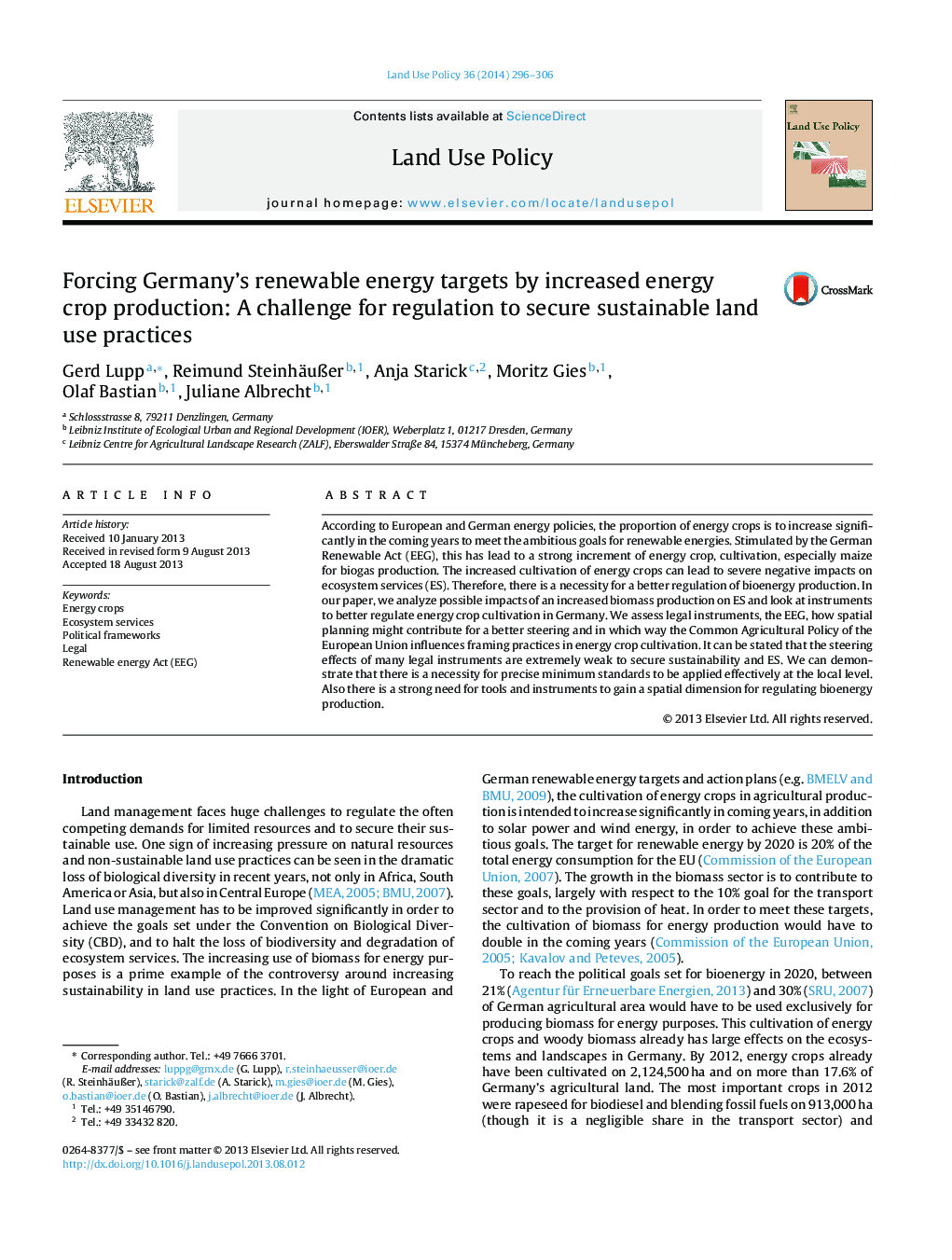| Article ID | Journal | Published Year | Pages | File Type |
|---|---|---|---|---|
| 6548970 | Land Use Policy | 2014 | 11 Pages |
Abstract
According to European and German energy policies, the proportion of energy crops is to increase significantly in the coming years to meet the ambitious goals for renewable energies. Stimulated by the German Renewable Act (EEG), this has lead to a strong increment of energy crop, cultivation, especially maize for biogas production. The increased cultivation of energy crops can lead to severe negative impacts on ecosystem services (ES). Therefore, there is a necessity for a better regulation of bioenergy production. In our paper, we analyze possible impacts of an increased biomass production on ES and look at instruments to better regulate energy crop cultivation in Germany. We assess legal instruments, the EEG, how spatial planning might contribute for a better steering and in which way the Common Agricultural Policy of the European Union influences framing practices in energy crop cultivation. It can be stated that the steering effects of many legal instruments are extremely weak to secure sustainability and ES. We can demonstrate that there is a necessity for precise minimum standards to be applied effectively at the local level. Also there is a strong need for tools and instruments to gain a spatial dimension for regulating bioenergy production.
Keywords
Related Topics
Life Sciences
Agricultural and Biological Sciences
Forestry
Authors
Gerd Lupp, Reimund SteinhäuÃer, Anja Starick, Moritz Gies, Olaf Bastian, Juliane Albrecht,
